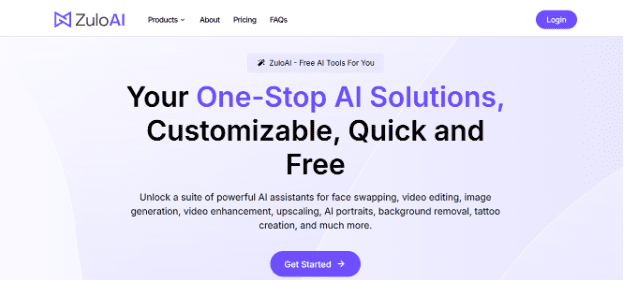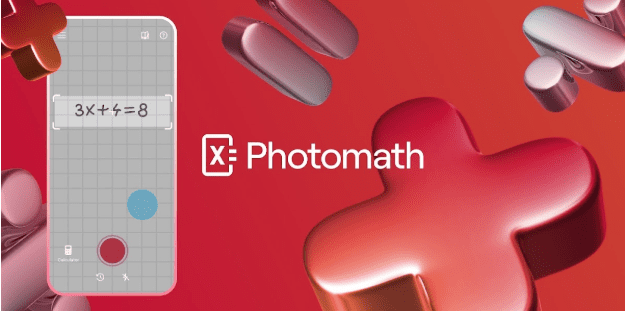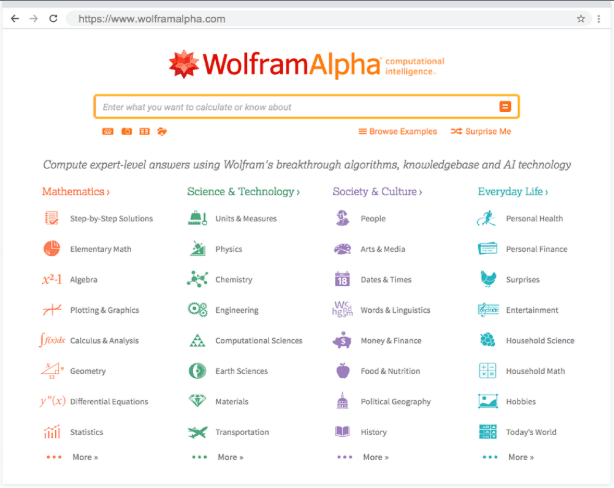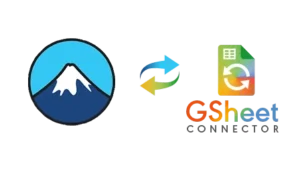Every student has hit the “math wall,” that frustrating moment when a problem seems impossible and the textbook offers no clear path forward. This experience can make anyone feel defeated, reinforcing the myth that you’re just “bad at math.” For years, the only way past this wall was with a teacher’s help or an expensive tutor.
AI math solvers are creating a new path. They are designed to do what a standard calculator can’t: act as a learning partner. Instead of just giving you the final answer, these tools break down complex problems into simple, logical steps. They show you how to solve it, not just what the solution is, helping you build real skills and confidence. The AI in Education Market is valued at $7.71 billion in 2025 and is accelerating this trend by growing at a CAGR of over $31\%$ [https://resourcera.com/data/artificial-intelligence/ai-in-education-statistics/].
But which free tools actually deliver on this promise? We put the most popular options to the test to see which ones are truly the best study partners for 2025.
How We Tested for Real-World Use
To build a list you can rely on, we graded these tools on what matters most during a late-night study session:
- Accuracy: Do they consistently get the right answers, from basic algebra to complex calculus?
- Helpful Explanations: Do they provide clear, step-by-step solutions that actually teach the method, or just a wall of text?
- Effortless Input: How easy is it to get your problem into the app? We prioritized tools that could instantly scan problems from a photo, even with messy handwriting.
- Genuinely Free: Is the free version powerful enough for daily homework, or is it just a weak demo designed to force an upgrade?
The 5 Best Free AI Math Solvers of 2025
1. ZuloAI: The Ultimate All-Rounder[https://www.zuloai.com]
Best For: Quickly solving any type of problem, whether it’s typed, in a textbook, or scribbled in your notebook.
Why It’s a Top Pick: ZuloAI is the multi-tool of math solvers. Its biggest strength is its powerful scanner, which accurately reads printed text and even messy handwriting from a photo. It delivers clean, step-by-step solutions that are easy to follow. ZuloAI is equipped with an extensive syllabus library, making it highly efficient for structured learning, and it is frequently used for preparing students for high-level exams like the International Baccalaureate (IB) [https://www.zuai.co/blogs/ai-math-solver-the-ultimate-tool-for-students]. With an app, website, and Chrome extension, it’s a reliable tool that’s always accessible, no matter how you study.
Pricing: The core solver is robust and free to use.
2. Photomath: The Instant Textbook Scanner[https://photomath.com]
Best For: Students working from physical textbooks who need the fastest way to check their work.
Why It’s a Top Pick: Photomath feels like a magic trick. Point your phone’s camera at a printed math problem, and the solution appears instantly with a step-by-step breakdown. Its speed and accuracy with textbook problems are unmatched. The tool breaks down each problem into bite-sized steps, allowing users to access basic step-by-step explanations at no charge. This focus on the “how” rather than just the “what” has made it a massive commercial success, with the app having billions of math problems solved by users globally.
Pricing: The core features are free. A “Plus” subscription unlocks more detailed, custom Animated Tutorials and textbook-specific solutions for deeper learning.
3. Microsoft Math Solver: The Free Digital Tutor[https://mathsolver.microsoft.com]
Best For: Prepping for an exam by not just getting answers, but also practicing the concepts.
Why It’s a Top Pick: This tool goes beyond just solving your immediate problem. Microsoft Math Solver provides comprehensive resources after solving an equation, including related practice quizzes, links to educational video tutorials from reputable sources, and interactive graphs. It supports a wide range of functions, from simple evaluation to complex differentiation and integration, and allows input via handwriting or digital ink [https://support.microsoft.com/en-us/office/solve-math-equations-with-math-assistant-in-onenote-1b37bb8d-ecd1-40d7-8d0f-5e6e46547441]. It’s a complete learning ecosystem designed to help you master a topic, not just survive the homework.
Pricing: It’s 100% free to use, with no ads or premium tiers.
4. WolframAlpha: The University-Level Powerhouse[https://www.wolframalpha.com]
Best For: University students, engineers, and anyone tackling highly advanced mathematics.
Why It’s a Top Pick: WolframAlpha is not just a solver; it’s a computational knowledge engine that handles advanced symbolic and numeric computation. It operates on a completely different level, effortlessly handling complex calculus, differential equations, and abstract algebra that would crash other apps. The platform offers extensive specialized resources, including free interactive online courses for subjects like Introduction to Calculus and Differential Equations. While its interface can be less intuitive for beginners, it is the undisputed champion for complex STEM work.
Pricing: The engine provides final answers for free, but seeing the step-by-step solutions for most complex problems requires a Pro subscription (starting around $\approx\$60$ per year)
- Gemini (from Google): The Conversational AI Tutor[https://gemini.google.com/app]
Best For: Understanding the “why” behind a problem through a natural conversation.
Why It’s a Top Pick: Unlike tools that just process equations, Gemini allows you to have a conversation about your math problem. You can paste in a word problem, ask for a simpler explanation, or explore a concept in more detail. Recent evaluations on complex problems, such as those from the International Mathematical Olympiad (IMO), have demonstrated Gemini’s strong proof-based reasoning capabilities, achieving high scores when utilizing multi-step verification pipelines. It is the best tool for untangling complex theories or getting help on problems that are not just a straightforward equation.
Pricing: It’s completely free to use.
Side-by-Side Comparison
| Feature | ZuloAI | Photomath | Microsoft Math Solver | WolframAlpha | Gemini (from Google) |
| Primary Strength | Versatile Input | Instant Camera Scan | In-Depth Learning | Advanced Computation | Conversational Tutoring |
| Reads Handwriting? | Yes | Yes (Camera) | Yes (Draw) | No | No |
| Free Step-by-Step? | Yes | Yes (Core) | Yes | No (Pro Needed) | Yes |
| Best For | Everyday Homework | Textbook Problems | Exam Prep | University Math | Understanding Concepts |
Source
The Bottom Line: Your Go-To Math Solver Cheat Sheet
The right tool depends on the job. Keep this simple guide in mind:
- For everyday homework and handwritten notes, use ZuloAI.
- For instant answers from a textbook, use Photomath.
- For practicing and preparing for a test, use Microsoft Math Solver.
- For advanced, university-level math, use WolframAlpha.
- For talking through a problem or concept, use Gemini.
Frequently Asked Questions (FAQ)
-
Can you use these tools to cheat?
They’re learning tools. Using them on a test is cheating and won’t help you learn. The best use is to check your work or get unstuck when you’re studying. Studies show that when students use AI learning tools, their self-assessed confidence about subject mastery increases by 23% [https://sqmagazine.co.uk/ai-in-education-statistics/].
-
What’s the best solver for advanced math like calculus?
WolframAlpha is the most powerful for high-level math. For standard calculus problems, ZuloAI and Microsoft Math Solver are also excellent and often have easier-to-follow steps.
-
What’s the biggest difference between a solver and a calculator?
A calculator gives you the final number. A solver shows you how to get there, teaching you the process. It’s the difference between being given a fish and learning how to fish.









































